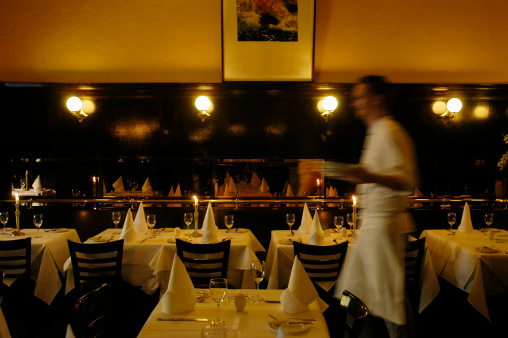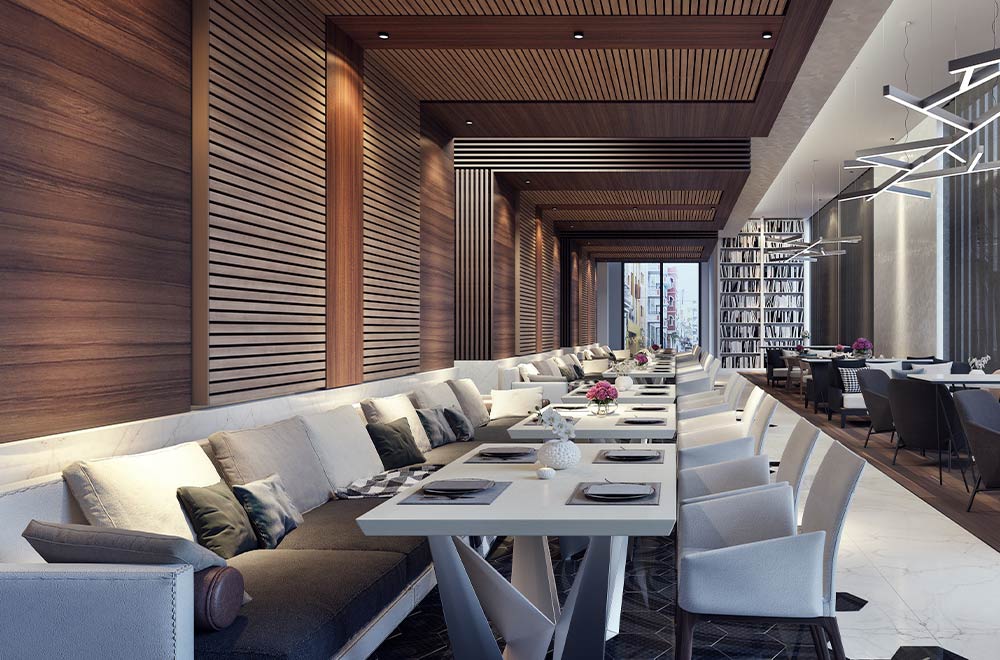Savor Genuine Oriental Food With a Pan-Asian Spin for a Culinary Experience
Starting a cooking trip through genuine Eastern food, improved with a Pan-Asian spin, offers an one-of-a-kind opportunity to discover the abundant tapestry of tastes that define the region's diverse cooking traditions. This experience invites you to relish the charming equilibrium of preferences-- pleasant, salted, spicy, and sour-- balanced by aromatic natural herbs and flavors. Picture the innovative fusion of Thai curry and ramen or the unforeseen delight of sushi burritos. As you ponder these attracting meals, take into consideration the cultural stories and historical impacts that form them, each bite supplying a tale waiting to be found.

Exploring Pan-Asian Flavors
In the realm of worldwide gastronomy, Pan-Asian food stands apart for its impressive variety and the unified interplay of flavors from different Oriental societies. This culinary method celebrates the one-of-a-kind ingredients and rich traditions found throughout the continent, developing a tapestry of tastes that is both fascinating and gratifying. Secret to Pan-Asian food is its capacity to stabilize contrasting tastes-- wonderful, salty, spicy, and sour-- while highlighting the freshness and high quality of each ingredient.
From the umami-rich soy sauce of Japan to the fiery chili peppers of Thailand, Pan-Asian food uses a comprehensive palette of tastes. These aspects are often integrated in inventive methods, boosting recipes with layers of complexity. As an example, using fragrant herbs such as lemongrass and cilantro, common in Vietnamese and Thai cuisine, includes a refreshing illumination to recipes, while the unification of coconut milk provides a velvety, rich appearance.
The emphasis on fresh fruit and vegetables and fragrant seasonings guarantees that each dish is not only a feast for the taste yet additionally for the detects. Pan-Asian cuisine welcomes diners to get started on a cooking journey, exploring the large and differed landscapes of Eastern gastronomy with every bite.
Blend Meals to Attempt
While Pan-Asian cuisine is celebrated for its traditional flavors, the modern culinary landscape is significantly embracing fusion recipes that mix these timeless aspects with influences from various other regions. This innovative approach not only honors the rich heritage of Oriental cookeries however additionally introduces novel taste experiences that attract contemporary tastes buds.
A prime example of such a blend meal is the Korean-Mexican taco, where seasoned bulgogi beef is covered in a cozy tortilla, covered with kimchi and a zesty gochujang-infused salsa. This combination marries the bold, mouthwatering tastes of Korea with the vibrant, fresh components of Mexican cuisine. In a similar way, sushi burritos have actually gained popularity, amalgamating the delicate artistry of Japanese sushi with the passionate, hand-held ease of a burrito, typically including fusion ingredients like tempura shrimp and avocado with a drizzle of wasabi mayo.
Another noteworthy recipe is Thai curry ramen, which instills the luscious, aromatic spices of Thai curry right into the calming broth of standard Japanese ramen, creating a harmonious mix that entices the detects. These fusion recipes extend beyond plain uniqueness; they stand for a culinary dialogue between societies, motivating expedition and development in the globe of Pan-Asian cuisine.
Essential Active Ingredients and Seasonings
To absolutely appreciate Pan-Asian food, one must understand the essential active ingredients and spices that develop its structure. This diverse culinary style attracts from an abundant tapestry of Oriental customs, utilizing a harmonious mix of flavors and appearances.
Fragrant components are essential, with lemongrass, garlic, and ginger being ubiquitous throughout numerous Pan-Asian recipes. These components offer a fragrant base that improves the intricacy of tastes. Flavors such as celebrity anise, cardamom, and cinnamon introduce warmth and personality, echoing influences from areas like China and India.

Food Preparation Methods and Tips
Understanding the art of Pan-Asian food requires experience with its distinctive food giovannis preparation methods, each adding to the garden cafe dynamic tapestry of flavors this culinary tradition is commemorated for. Central to these techniques is the stir-fry, a fast food preparation method that maintains the dietary honesty and vibrant colors of ingredients. Utilizing a frying pan, the stir-fry technique allows for even warmth circulation, vital for attaining the particular texture and taste balance of Pan-Asian recipes.
An additional essential strategy is steaming, particularly prevalent in Chinese cuisine. This mild approach maintains the natural tastes and nutrients of active ingredients, making it optimal for seafood and vegetables. Dumplings, a precious staple, typically profit from steaming, resulting in soft, delicious structures.
Grilling, likewise important, imparts smoky depths to recipes such as Korean bulgogi or Japanese yakitori (asian restaurant isb). This technique usually includes marinading active ingredients, permitting tastes to permeate deeply prior to cooking over an open fire or warmer
Last but not least, mastering the art of stabilizing flavors-- wonderful, sour, salty, bitter, and umami-- is important. Properly layering these aspects can raise a meal from normal to extraordinary, offering a complicated and pleasing cooking experience that personifies the essence of Pan-Asian cuisine.
Dining Experiences Worldwide
Around the world, Pan-Asian cuisine uses an exceptional dining experience, commemorated for its abundant tapestry of tastes and vivid presentations. This culinary phenomenon has actually transcended cultural borders, capturing the hearts and palates of food fanatics worldwide. In cosmopolitan cities fresh York, London, and Sydney, Pan-Asian restaurants function as fusions where culinary customs from Thailand, Japan, China, and beyond converge, giving restaurants with an eclectic mix of recipes that highlight the region's variety.
The international allure of Pan-Asian food lies in its ability to supply both credibility and advancement. Cooks skillfully marry traditional active ingredients such as click to find out more lemongrass, soy sauce, and miso with contemporary strategies, resulting in meals that are both familiar and refreshingly brand-new. This combination enables restaurants to get started on a culinary journey that respects heritage while welcoming modernity.
Moreover, eating experiences are raised through attentively created atmospheres that mirror the principles of Pan-Asian aesthetics. From minimalist Japanese-inspired insides to vibrant Thai-themed areas, each restaurant provides a special ambiance that matches the cooking offerings. Therefore, patrons are not just taking in a meal but partaking in a social experience, making Pan-Asian eating a truly global phenomenon.
Verdict
The exploration of Pan-Asian cuisine provides an extensive understanding of the detailed interplay of tastes and cooking customs across Asia. By accepting fusion meals such as Thai curry ramen and sushi burritos, the culinary trip not only highlights the versatility of standard components but also showcases innovative contemporary techniques. This gastronomic adventure, enhanced by crucial spices and cooking techniques, gives an unique possibility to value the multiculturalism and cooking virtuosity that specify Pan-Asian food on a global scale.
Beginning on a culinary journey via genuine Asian cuisine, boosted with a Pan-Asian spin, supplies an one-of-a-kind chance to explore the rich tapestry of tastes that define the area's diverse culinary customs.In the realm of international gastronomy, Pan-Asian food stands out for its exceptional variety and the unified interaction of tastes from numerous Oriental societies. Secret to Pan-Asian cuisine is its capability to balance contrasting tastes-- wonderful, salty, spicy, and sour-- while highlighting the freshness and top quality of each component.
